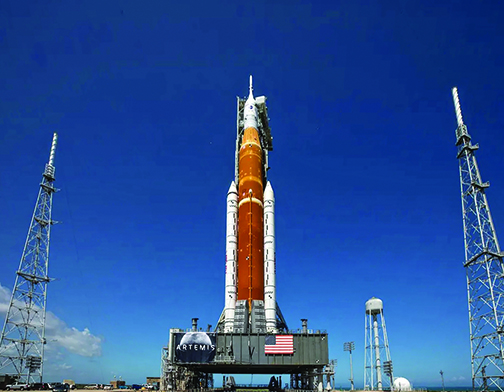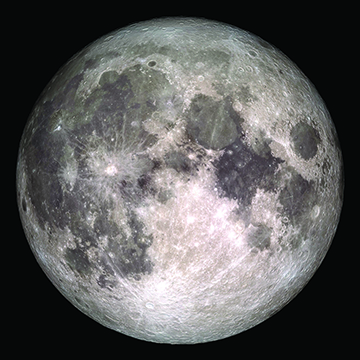“Space has the ability to produce a triple bottom line, or ROIII: Return on Investment, Innovation, and Inspiration.”
- Robert C. Jacobson
NASA’s Artemis I rocket launched on November 16, 2022, with re-entry and splashdown on December 11, 2022. This demonstrated the first major goal of bringing a human-rated spacecraft to space.
The towering monstrosity of hardware stands at 90 meters (322 feet) and was built to the tune of $40 billion, a number projected to double in the next few years as the project moves forward. The growing aerospace economy is made possible, to a large degree, by a contingency of Colorado-based companies making space exploration possible. The imminent objectives of the Artemis 1 project involve an unmanned mission to the moon, followed by manned missions designed to establish a populated base camp near the south pole of Earth’s celestial sister. This will provide the necessary research and lay the groundwork for a similar mission to Mars.
Mankind’s last trip to the Moon was in 1972, aboard the final Apollo 17 mission. In the 50 years since, aerospace technology has transformed amid revolutionary innovation. The current landscape of the industry presents a hybrid collaboration of government agencies and private sector companies working together to return humans to the surface of the Moon.
Lockheed Martin Space
Atop the towering Artemis I Space Launch System (SLS) sits the Orion capsule — primarily built and engineered by Lockheed Martin Space, a Denver/Boulder-based company. This spacecraft has been specifically developed to take human beings deep into space. State-of-the-art technology includes advanced propulsion, communication, navigation, radiation protection, and life support systems. The capsule also features the biggest heat shield ever built which will protect astronauts as they re-enter Earth’s atmosphere. Currently, the company is contracted for six Orion missions with a potential six more on the table. In the upcoming Artemis III mission, Lockheed’s Orion capsule will enable the first woman and the first African-American to set foot on the Moon.
Maxar
Once the Orion capsule reaches the Moon, it will dock into Gateway, an orbiting spaceship which will serve as a communication hub and staging area. A Westminster-based company, Maxar, develops the Power and Propulsion Element (PPE) which makes altitude control, movement, and maneuvering possible through electricity-generated bursts of ionized atoms. This sustainable approach removes chemical propellants from the equation as astronauts use the Gateway module to make their final descent to the lunar surface.
Advanced Space

Lunar Outpost’s MAPP rover will help establish wireless 4G/LTE lunar communications. Image: moonmarkets.moonvillageassociation.org
Based in Westminster, this team of innovators recently launched CAPS, the Cislunar Autonomous Positioning System. According to the company website, this piece of orbiting technology will “serve as a pathfinder for NASA’s Artemis program, and demonstrate our proprietary peer-to-peer navigation capability…” The unorthodox orbit of the microwave oven-sized module will provide uninterrupted communication with Earth by passing within 1,000 km of the Moon’s surface at the South Pole and then traveling in a twisting elliptical path to as far as 40,000 km from the Moon’s North Pole. Proper and precise execution of this near rectilinear halo orbit (NRHO) will act as a pathfinder for the Gateway spacecraft and ensure it maintains a constantly unobstructed view of earth.
Lunar Outpost
NASA’s lunar astronauts will eventually be establishing a manned base at the Moon’s South Pole, at which time on-site communications infrastructure will be essential. This Golden-based robotics company leads the private sector in the potential monetization of lunar infrastructure (the cislunar economy) while positioning themselves to be a successful NASA partner. Currently, they have partnered with Nokia’s NASA Tipping Point project along with Intuitive Machines to build, establish, test, and integrate the first ever 4G/LTE network on the surface of the Moon.
In late 2022, Intuitive Machines will deliver numerous payloads via their Nova-C lander. This will be remotely operated to install a low-latency, long-rage, wireless communications network. This system will include transmission modules and antennas, which will be deployed by Lunar Outpost’s M1 MAPP (Mobile Autonomous Prospecting Platform) rover — a surface vehicle the size of a small dog which will be operated remotely from Earth.
These companies represent the tip of the Colorado-based aerospace iceberg. An estimated 180+ additional companies are working to contribute to revolutionizing humanity’s interaction with space in one way or another. While lunar exploration seems to have gone out of style over the last 50 years, there’s a new attitude on the horizon. The cislunar economy is once again inspiring the aerospace industry to shoot the Moon.



